
C-V System Overview There are 2 separate sides to the heart. Each half is a separate pump.The blood 100% is pumped independently by each half. LUNGS The right side of the heart pumps blood to RIGHT HEART PUMP LEFT HEART PUMP 100% 100% the lungs,referred to as the pulmonary circulation. HEART MUSCLE 3% 14% The left side of the heart pumps blood to BRAIN the body,referred to as the systemic SKELETAL MUSCLE 15% circulation. BONE 5% VEINS ARTERIES Each organ is connected to the arterial GASTROINTESTINAL SYSTEM,SPLEEN21% reservoir on one side,and to the venous 6% LIVER system on the other.P in the A side is high;P in the V side is low.This AP KIDNEY 22% drives blood through each organ. 6% SKIN the 2 sides of the heart have independent functions,they are activated OTHER 8% simultaneously by the electrical activity of the heart,and they contract and relax simultaneously
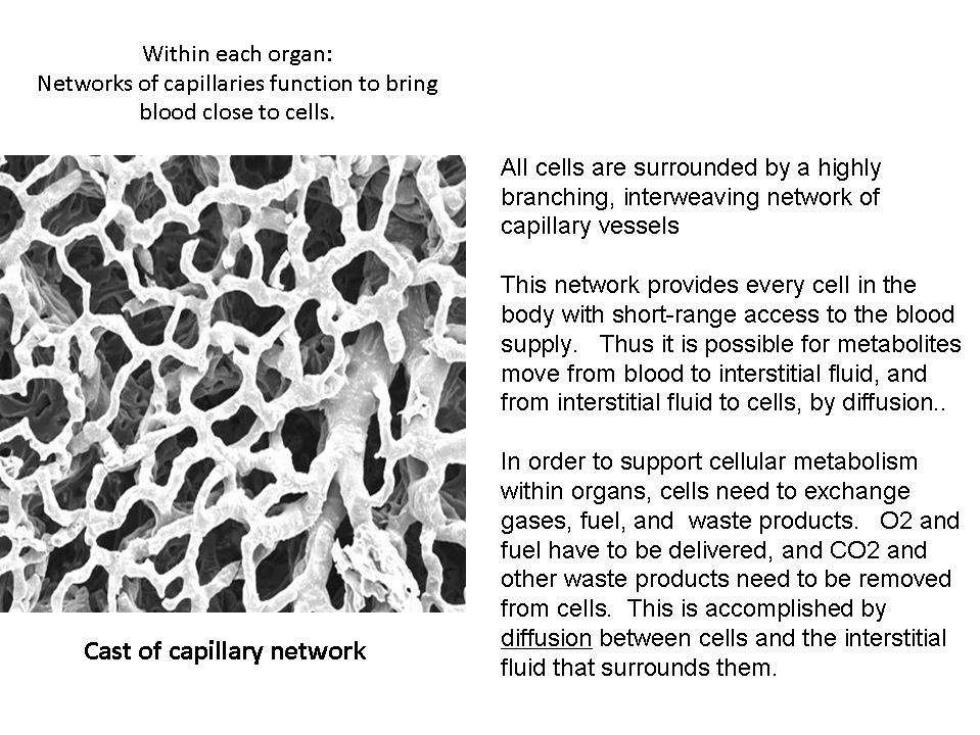
Within each organ: Networks of capillaries function to bring blood close to cells. All cells are surrounded by a highly branching,interweaving network of capillary vessels This network provides every cell in the body with short-range access to the blood supply.Thus it is possible for metabolites move from blood to interstitial fluid,and from interstitial fluid to cells,by diffusion.. In order to support cellular metabolism within organs,cells need to exchange gases,fuel,and waste products.O2 and fuel have to be delivered,and CO2 and other waste products need to be removed from cells.This is accomplished by Cast of capillary network diffusion between cells and the interstitial fluid that surrounds them
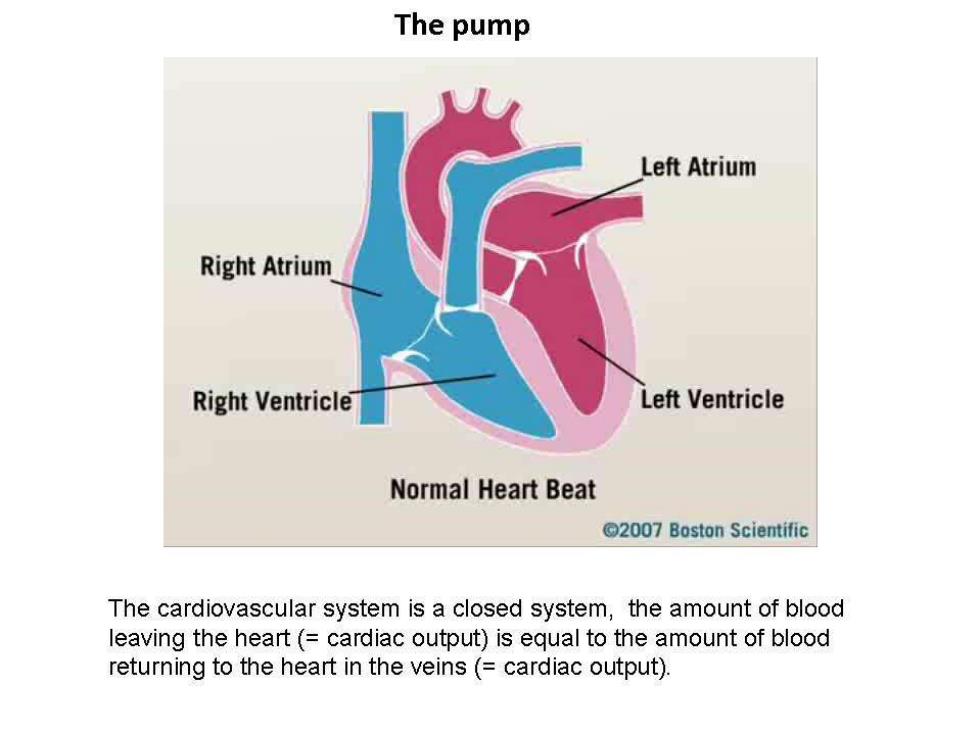
The pump Left Atrium Right Atrium Right Ventricle Left Ventricle Normal Heart Beat @2007 Boston Scientific The cardiovascular system is a closed system,the amount of blood leaving the heart(=cardiac output)is equal to the amount of blood returning to the heart in the veins(=cardiac output)
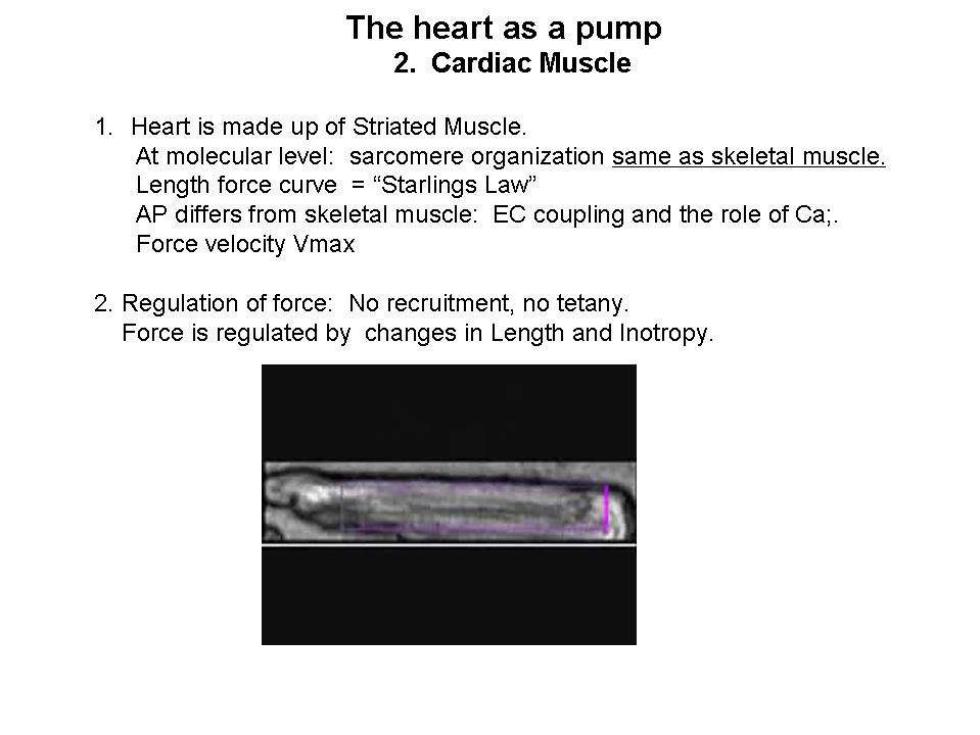
The heart as a pump 2.Cardiac Muscle 1.Heart is made up of Striated Muscle At molecular level:sarcomere organization same as skeletal muscle. Length force curve=“Starlings Law” AP differs from skeletal muscle:EC coupling and the role of Ca;. Force velocity Vmax 2.Regulation of force:No recruitment,no tetany. Force is regulated by changes in Length and Inotropy
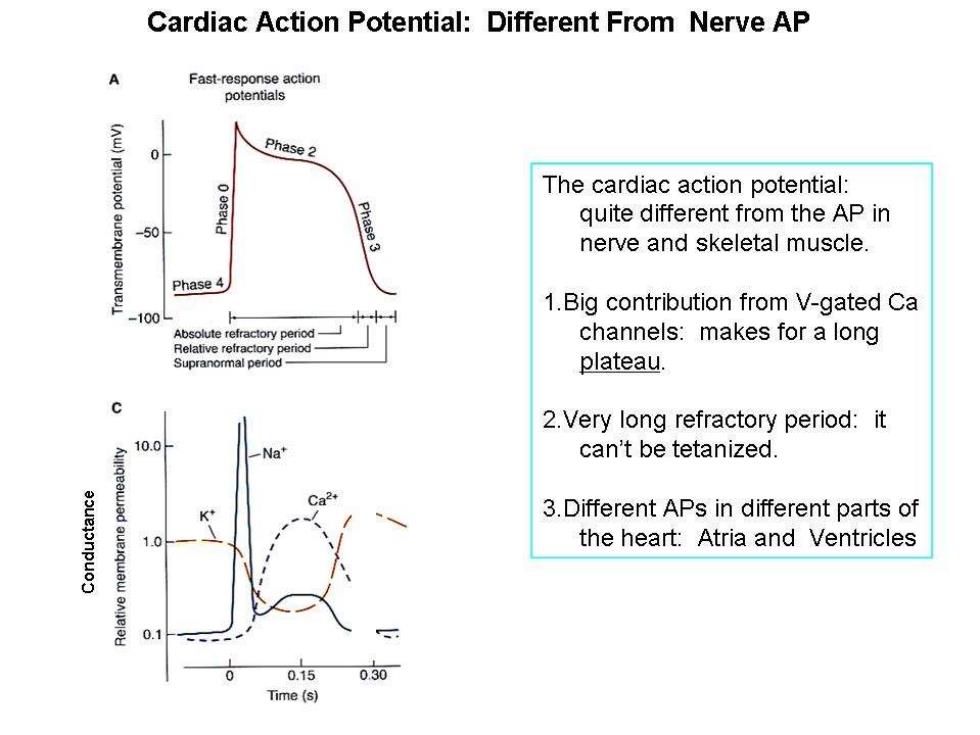
Cardiac Action Potential:Different From Nerve AP A Fast-response action potentials (Aw) Phase 2 The cardiac action potential: Phase 3 quite different from the AP in -50 nerve and skeletal muscle. Phase 4 1.Big contribution from V-gated Ca -100 Absolute refractory period- channels:makes for a long Relative refractory period Supranormal period- plateau. 2.Very long refractory period:it 10.0 can't be tetanized. 3.Different APs in different parts of 0 the heart:Atria and Ventricles 0.1 0.15 0.30 Time(s)
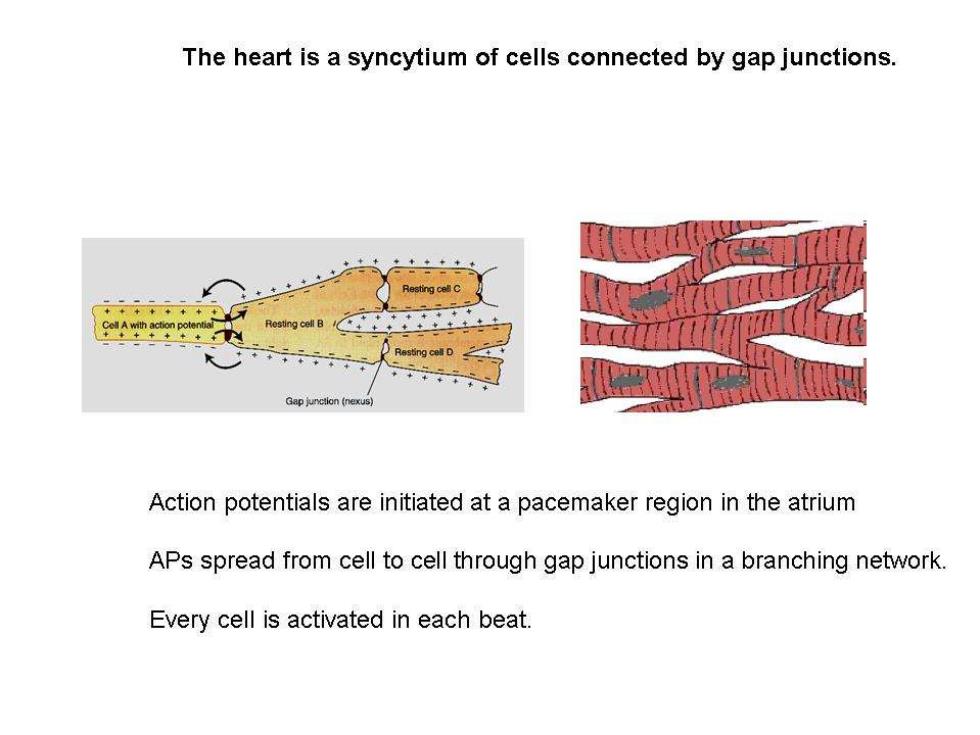
The heart is a syncytium of cells connected by gap junctions. Gap junction (nexu Action potentials are initiated at a pacemaker region in the atrium APs spread from cell to cell through gap junctions in a branching network. Every cell is activated in each beat